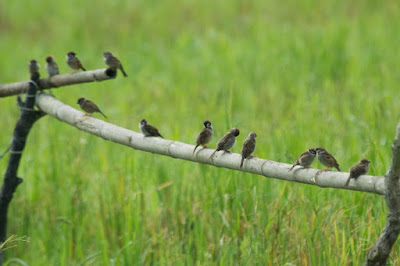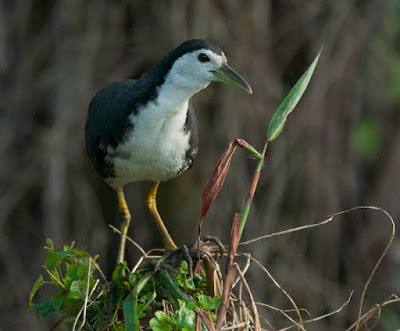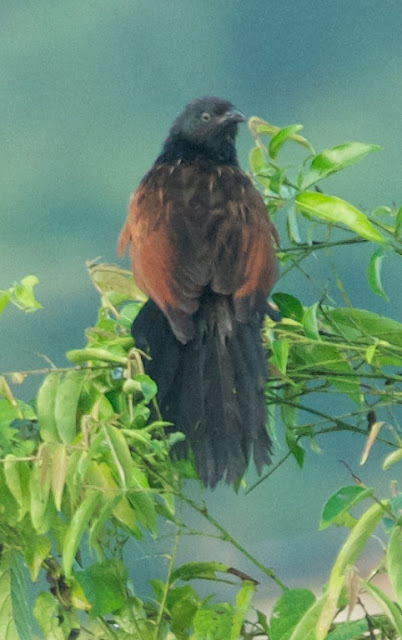Our return to Sarawak, after our two-week trip to Tasmania, was fairly brief. I had to get back to Canada in time to attend a conference in Mexico, so we were mostly busy with packing and goodbyes. I did, though, manage to get in an outing or two - my last in Asia, I thought, for 2014, though (as you will see) Eileen and I were to be back far sooner, and for far longer, than we thought. I didn't know that then, of course, and so I looked at a brief birding trip to Chupak with Vincent Wong, on April 3, 2014, as a sort of farewell.
We didn't see anything all that unusual (which is why I have to resort to a photo of a bunch of Tree Sparrow (Passer montanus) - nice birds though they are).
Nonetheless, it is always nice to get a good look at a Cinnamon Bittern (Ixobrychus cinnamomeus) stalking its prey through the grass.
Closeups of a Common Moorhen (Gallinula chloropus) may not seem all that exciting, but moorhens seem to be a lot shyer here than in, say, a park in London.
White-breasted Waterhens (Amaurornis phoenicurus) are usually much easier to get a close look at. They are practically garden birds in the Kuching area.
At the right times of year, Pacific Golden Plovers (Pluvialis fulva) turn up in areas with shorter vegetation (or, as here, where growing plants are protected by sheets of plastic).
As always, though, the Wood Sandpiper (Tringa glareola) was the commonest of the migrant shorebirds we came across.
For me, the ornithological highlight of the day was a chance to get some more-or-less reasonable photos of a rather ratty-looking Lesser Coucal (Centropus bengalensis). I find these birds harder to come by, or at least to see, than their cousin the Greater Coucal (C. sinensis). Other than size and a very different voice, the best way to spot a Lesser is to look for the pale shaft streaks on its mantle (they show up pretty clearly here).
I also kept an eye out for dragonflies, but got presentable shots of only a couple of common species. This is the near-ubiquitous Neurothemis ramburii.
And here is the commonest and most obvious of the local gomphids, Ictinogomphus decoratus, known as the Common Flangetail in Singapore.
This seems to be the only gomphid to hang around in open marshy areas (as opposed to forest pools and hillside streams), and is pretty much the only one I ever see near Kuching. That, though, says a lot more about my gomphid-finding abilities than it does about the local fauna, as there certainly are a number of other species in the area.

















No comments:
Post a Comment